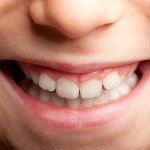
Varnishes have been is use as a delivery system for topical fluoride since the 1960s. Their effectiveness was highlighted to a greater extent following the publication of the first version of this Cochrane review in 2002. Since then use of fluoride varnish has been recommended in evidence-based guidance from SIGN, the SDCEP and the American Dental Association amongst others. With fluoride varnish increasingly being used in community based caries preventive programmes this update of the earlier Cochrane review is eagerly anticipated.
The main aim of the review was to determine the effectiveness and safety of fluoride varnishes in preventing dental caries in the child/adolescent population.
An extensive search was conducted in a wide range of databases were searched (the Cochrane Oral Health Group’s Trials Register, the Cochrane Central Register of Controlled Trials (CENTRAL), Medline, Embase, CINAHL, LILACS and BBO, ProQuest Dissertations and Theses, Web of Science Conference Proceedings and ClinicalTrials.gov). There were no language restrictions. Randomised or quasi-randomised controlled trials, comparing topically-applied fluoride varnish with placebo or no treatment in children up to 16 years during at least one year were included. The main outcome measure was caries increment. The usual Cochrane approaches to selection, abstraction and analysis were undertaken.
- 22 trials with 12,455 participants randomised were included.
- The fluoride concentration in 18 trials was 22,600 ppm F; the other trials ranged from 7000 ppm F to 56,300 ppm F
- 13 trials contributed data for the permanent tooth meta-analysis, the pooled D(M)FS prevented fraction estimate comparing fluoride varnish with placebo or no treatment was 43% (95% confidence interval (CI) 30% to 57%; P < 0.0001). There was substantial heterogeneity, however this body of evidence was assessed as of moderate quality.
- 10 trials contributed data for the primary tooth meta-analysis, The pooled d(e/m)fs prevented fraction estimate was 37% (95% CI 24% to 51%; P < 0.0001). There was some heterogeneity but the body of evidence was assessed as of moderate quality
- No significant association between estimates of D(M)FS or d(e/m)fs prevented fractions and the pre-specified factors of baseline caries severity, background exposure to fluorides, application features such as prior prophylaxis, concentration of fluoride, frequency of application were found.
The authors concluded
The conclusions of this updated review remain the same as those when it was first published. The review suggests a substantial caries inhibiting effect of fluoride varnish in both permanent and primary teeth, however the quality of the evidence was assessed as moderate, as it included mainly high risk of bias studies, with considerable heterogeneity.
Comment
This updated review adds an additional 13 studies to the original and confirms the substantive caries preventive effect of fluoride varnishes, with reduction in disease of about 40% . This was seen in both high and low caries risk groups and those with exposure to other sources of fluoride. The authors however, highlight the lack of reporting on adverse effects and other outcomes such as acceptability in the available trails and indicate that further evidence is required form high-quality studies in particular looking at complex interventions incorporating fluoride varnish with other caries preventive strategies, conducted in either the setting of a dental practice or a community site such as a school.
Links
Marinho VCC, Worthington HV, Walsh T, Clarkson JE. Fluoride varnishes for preventing dental caries in children and adolescents. Cochrane Database of Systematic Reviews 2013, Issue 7. Art. No.: CD002279. DOI: 10.1002/14651858.CD002279.pub2.

[…] on aspects such as the acceptability of the varnish. You can read more on this in a blog by the Dental Elf. All too late for my great-gran, who missed out on a school open day because she’d just had […]
[…] Dental Elf – 12th Jul 2013 – Updated review confirms substantial reductions in caries fr… […]
[…] Updated review confirms substantial reductions in caries from fluoride varnish applications […]